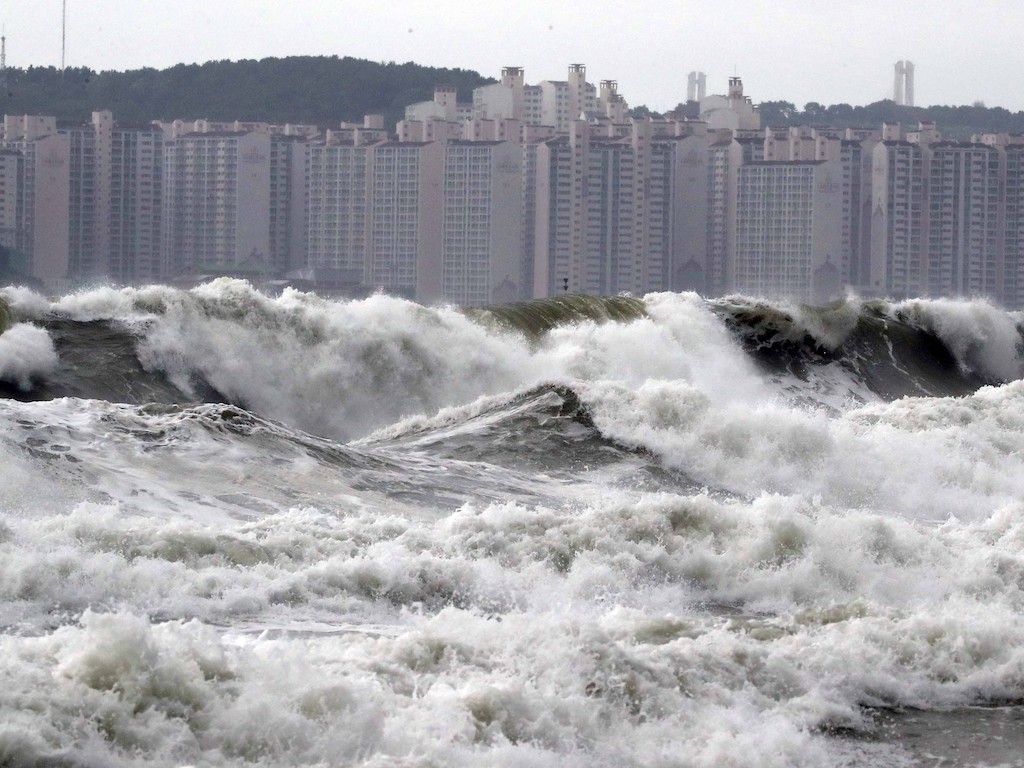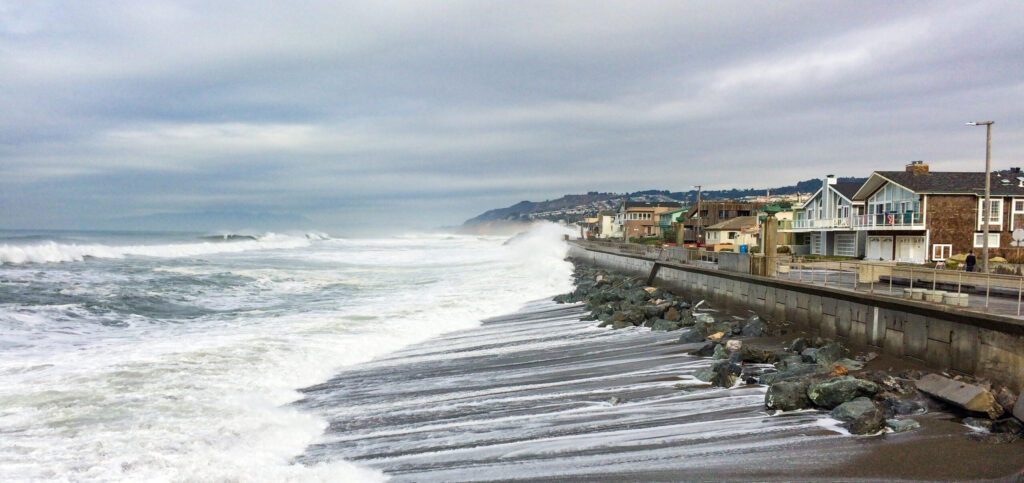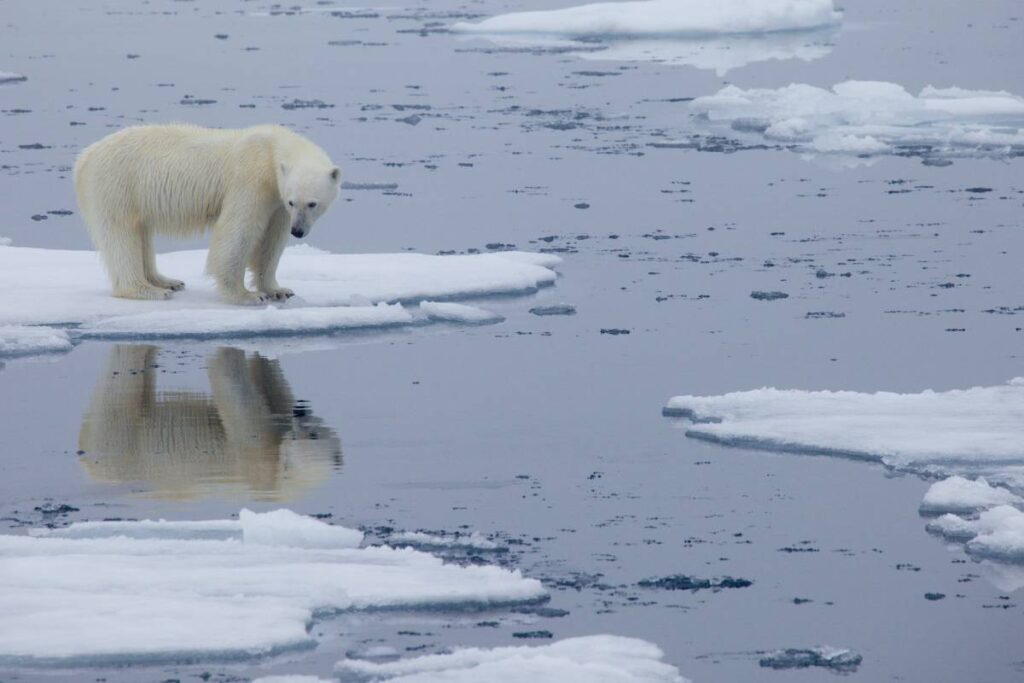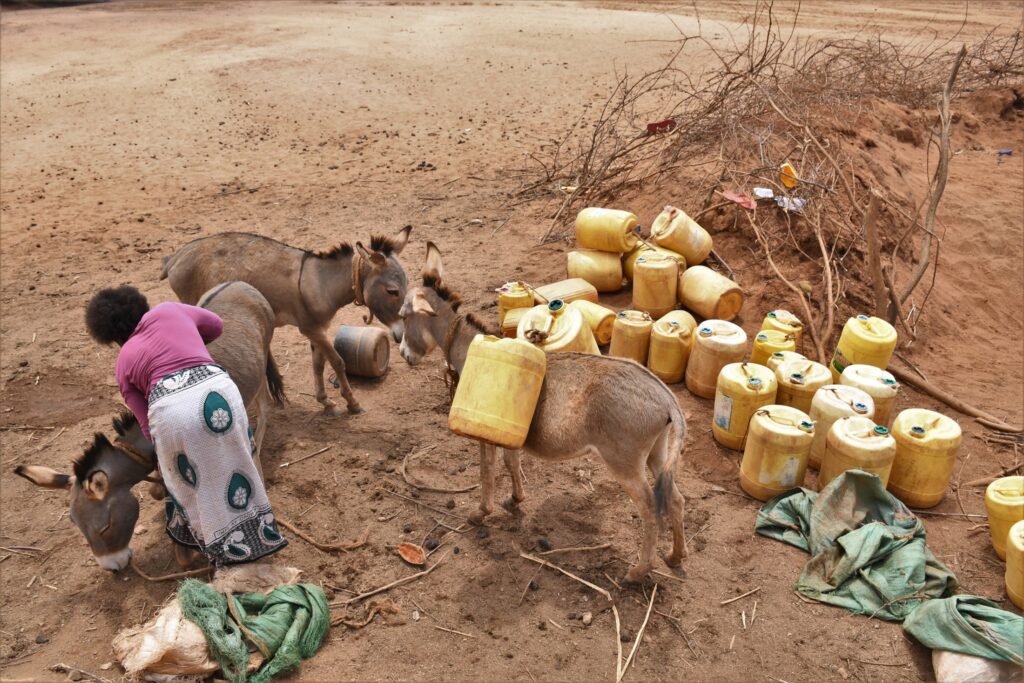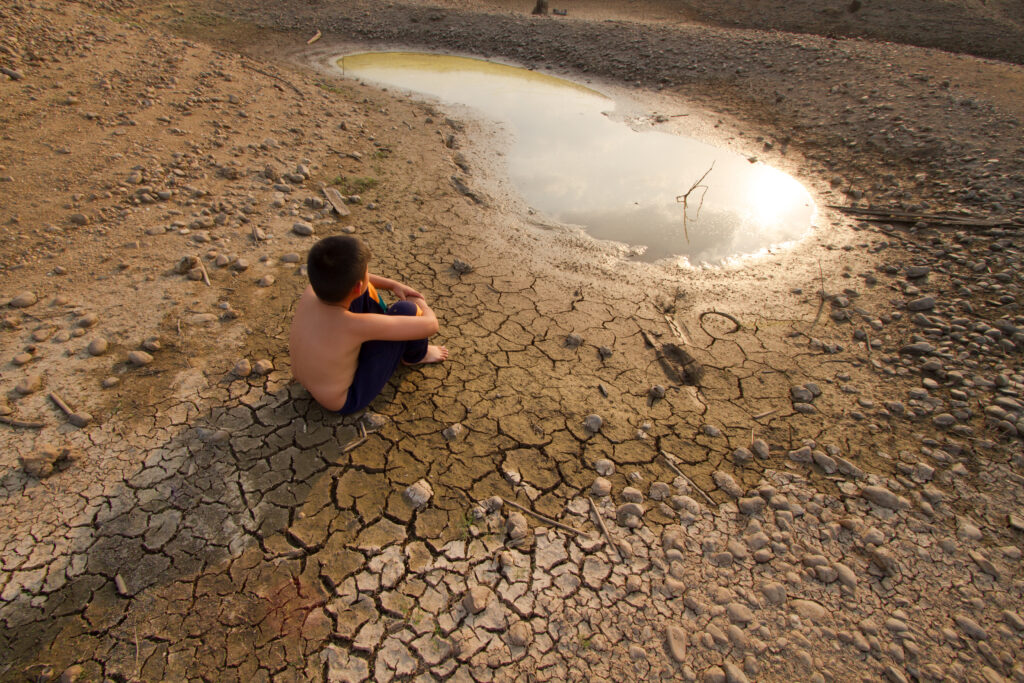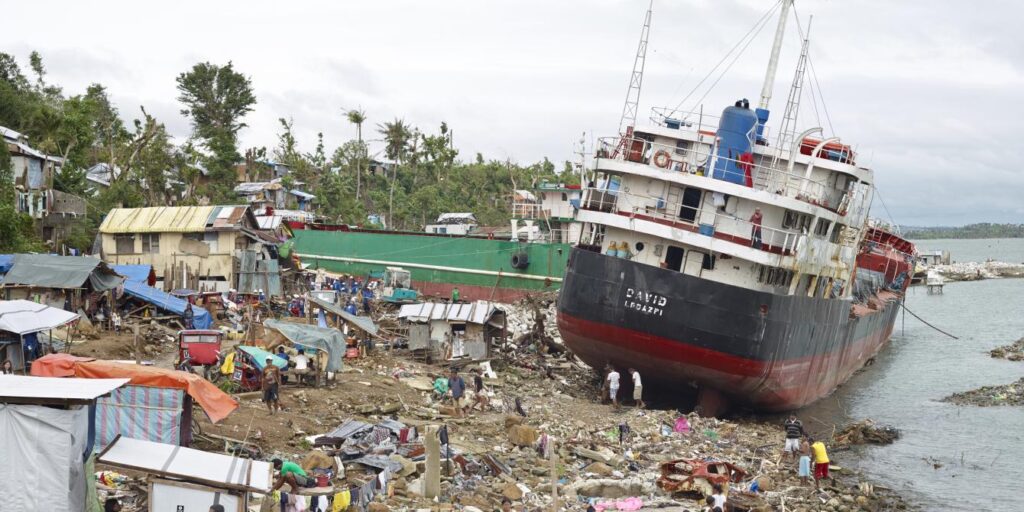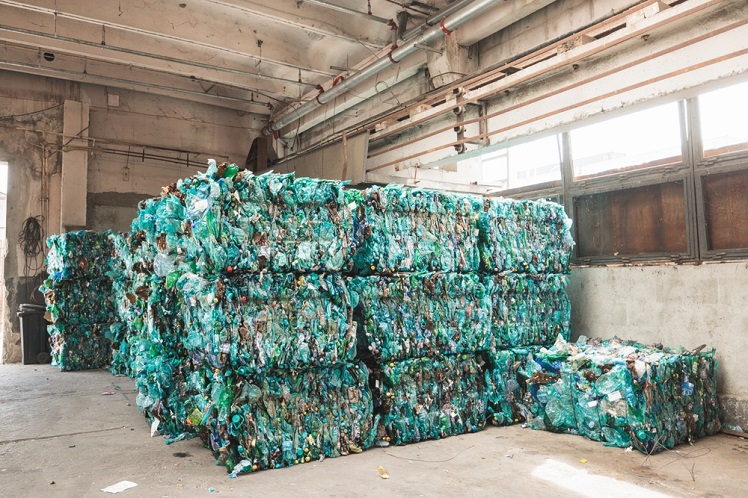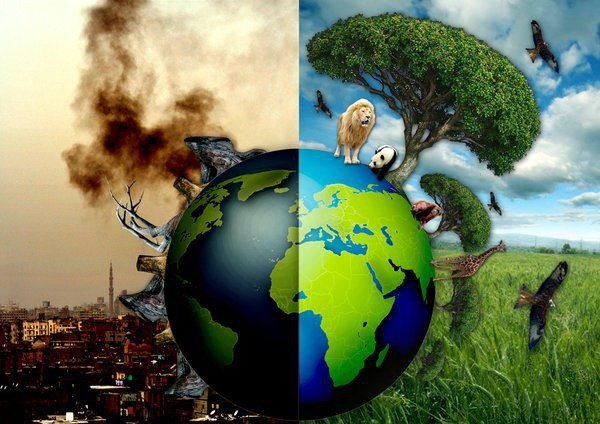What are typhoons, and why do they matter? Typhoons are among the most powerful and devastating natural disasters, affecting millions of people every year across Asia.
For instance, in 2020 alone, over 4.4 million people were displaced by typhoons in the Philippines. Beyond the immediate destruction, they can lead to long-term economic setbacks, costing billions in damage and recovery efforts.
As climate change accelerates, these storms are becoming more intense, increasing the urgency for robust disaster preparedness and climate adaptation strategies. For decision-makers in sustainability and risk management roles, understanding typhoons is critical to protecting both people and infrastructure in the face of escalating climate risks.
What Is a Typhoon and What Causes It?
Typhoons are tropical cyclones that occur in the western Pacific region. They typically form close to the equator because they use warm and humid air as fuel.
They form when warm ocean waters (usually above 26.5°C) heat the air above, causing it to rise and create low-pressure areas. This rising air cools and condenses, forming clouds and releasing stored heat that further fuels the storm.
The Coriolis effect from the Earth’s rotation causes the storm to spin. This causes the storm to absorb more heat from the ocean surface and gather energy.
Difference Between Tropical Storm and Typhoon
When wind speeds reach 63 km/h, it is classified as a tropical storm, and above 119 km/h, it is a typhoon.

Various factors, including sea surface temperatures, wind shear and atmospheric moisture, influence cyclone intensity and path. Wind speeds typically slow down when the source of heat and moisture is gone, such as moving over colder water or land.
What’s the Difference Between a Hurricane and a Typhoon?
Typhoons, hurricanes and cyclones are all tropical cyclones with different names based on their location. In the north Atlantic ocean and Northeast Pacific, they are called hurricanes, while in the West Pacific, they are known as typhoons. In the South Pacific and northern Indian Ocean, these storms are called cyclones.
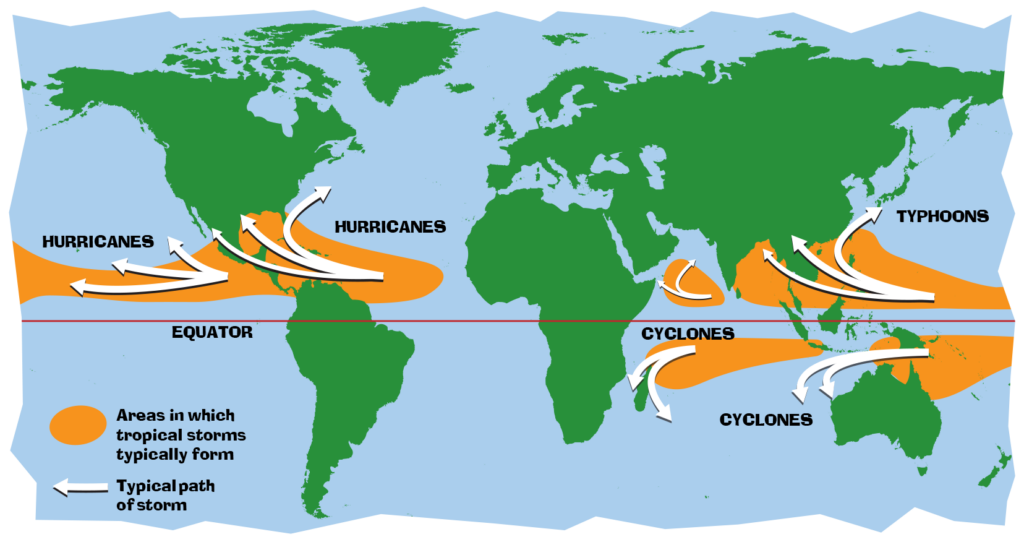
Despite the different names, the formation processes and characteristics of these storms are fundamentally the same.
What Areas Are Prone to Tropical Cyclones?
Typhoon-prone regions are primarily in the western Pacific Ocean, with countries such as Japan, the Philippines and parts of Southeast Asia being particularly vulnerable. These regions experience frequent tropical storms due to their proximity to large bodies of warm water.
For instance, Japan ranks as the most vulnerable country to typhoons. The country’s location in the warm waters of the northwest Pacific ocean, its mountainous terrain that causes rapid changes in wind speed and the East Asian monsoon create ideal conditions for tropical storm formation. On average, the country has 26 typhoons per year, with around three reaching land.
The Philippines is the second most vulnerable country, seeing 20 typhoons per year, with around nine reaching land. The country’s geography of over 7,000 islands makes typhoons particularly high risk for the country’s population.
Factors Contributing to Regional Vulnerability
Several factors contribute to the vulnerability of specific regions to typhoons. The presence of warm ocean currents, such as the Kuroshio current in the Pacific, increase the likelihood of their formation. Additionally, the geographical location of these regions, combined with the monsoon season, can exacerbate the impact.
Climate change is also playing a significant role, as rising sea temperatures are likely to increase the intensity and frequency of typhoons. For instance, recent studies show that the intensity of typhoons has increased by 10% since 1970, and this trend is expected to continue as global temperatures rise.
Impact of Typhoons
The impacts of typhoons are far-reaching, affecting both immediate and long-term aspects of society.
Immediate and Long-term Impacts of a Tropical Cyclone
The immediate impacts of typhoons include devastating winds, torrential rains and storm surges that can cause severe flooding and landslides.
For example, Typhoon Haiyan, which struck the Philippines in 2013, was one of the most powerful typhoons ever recorded, with wind speeds reaching up to 314 km/h. The storm caused over 6,000 deaths, displaced millions of people and resulted in economic losses estimated at USD 12 billion.
Long-term impacts include the destruction of infrastructure, loss of livelihoods and the prolonged disruption of economic activities. Recovery from such events can take years, placing significant strain on both local and national economies.
Humanitarian and Economic Costs
The humanitarian costs of typhoons are immense, with vulnerable populations, including the elderly, children and low-income communities, being the most affected. Displacement, food insecurity and the loss of essential services are common in the aftermath of a typhoon. Economically, the cost of rebuilding and recovery can be staggering.
For instance, Japan’s Typhoon Hagibis in 2019 caused approximately USD 15 billion in damage and displaced 200,000 people. Furthermore, the economic toll is not limited to the affected regions, as global supply chains can also be disrupted, leading to broader economic consequences.
Climate Change and Future Risks
Climate change is expected to exacerbate the risks associated with typhoons. As global temperatures rise, so too does the potential for more intense storms. The Intergovernmental Panel on Climate Change (IPCC) predicts that the number of Category 4 and 5 storms could increase by 13% if global temperatures rise by 2°C.
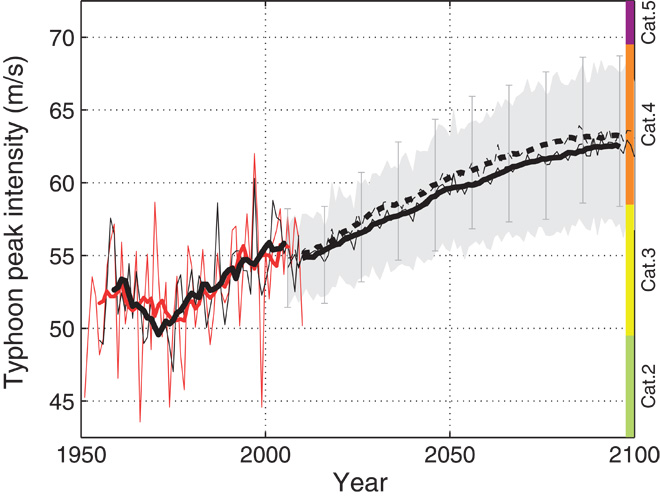
Strengthening Typhoon Resilience Through Adaptation and Mitigation
As typhoons become more severe, focused adaptation and mitigation are crucial. Adaptation strategies, like strengthening infrastructure, improving early warning systems and restoring coastal ecosystems, help communities withstand these powerful storms. Mitigation, including reducing greenhouse gas emissions and transitioning to renewable energy, addresses the underlying cause of intensifying typhoons.
These efforts protect against immediate risks and contribute to broader climate change resilience. Policymakers must prioritise these actions to safeguard vulnerable regions, ensuring both local and global strategies are aligned to combat the growing threat of climate change.
Eric Koons
Writer, United States
Eric is a passionate environmental advocate that believes renewable energy is a key piece in meeting the world’s growing energy demands. He received an environmental science degree from the University of California and has worked to promote environmentally and socially sustainable practices since. Eric has worked with leading environmental organisations, such as World Resources Institute and Hitachi ABB Power Grids.
Eric is a passionate environmental advocate that believes renewable energy is a key piece in meeting the world’s growing energy demands. He received an environmental science degree from the University of California and has worked to promote environmentally and socially sustainable practices since. Eric has worked with leading environmental organisations, such as World Resources Institute and Hitachi ABB Power Grids.

